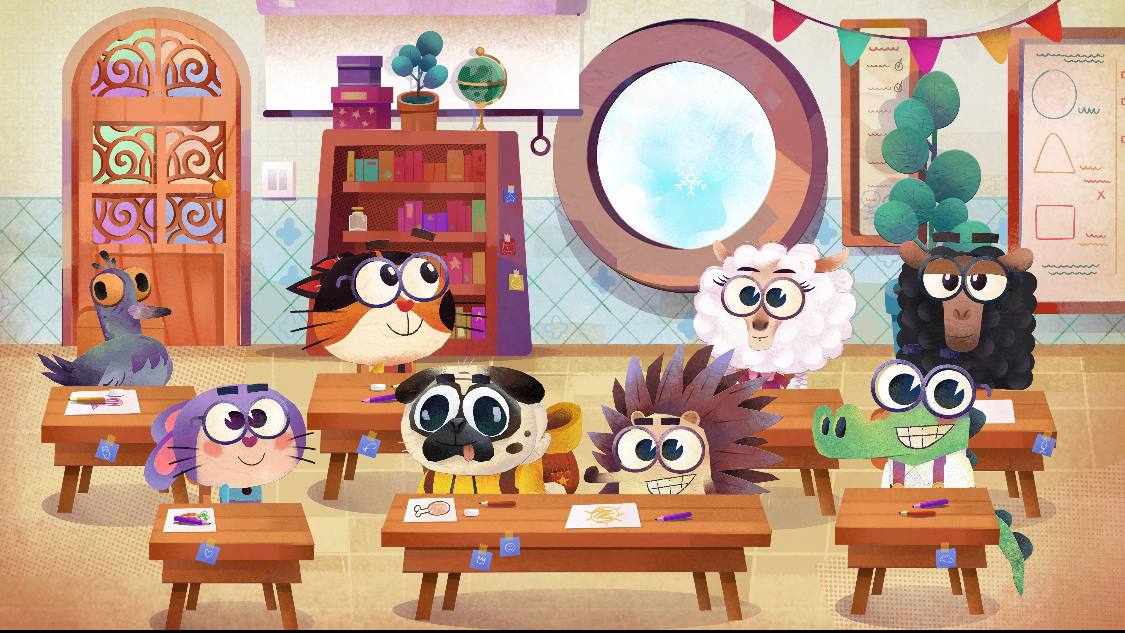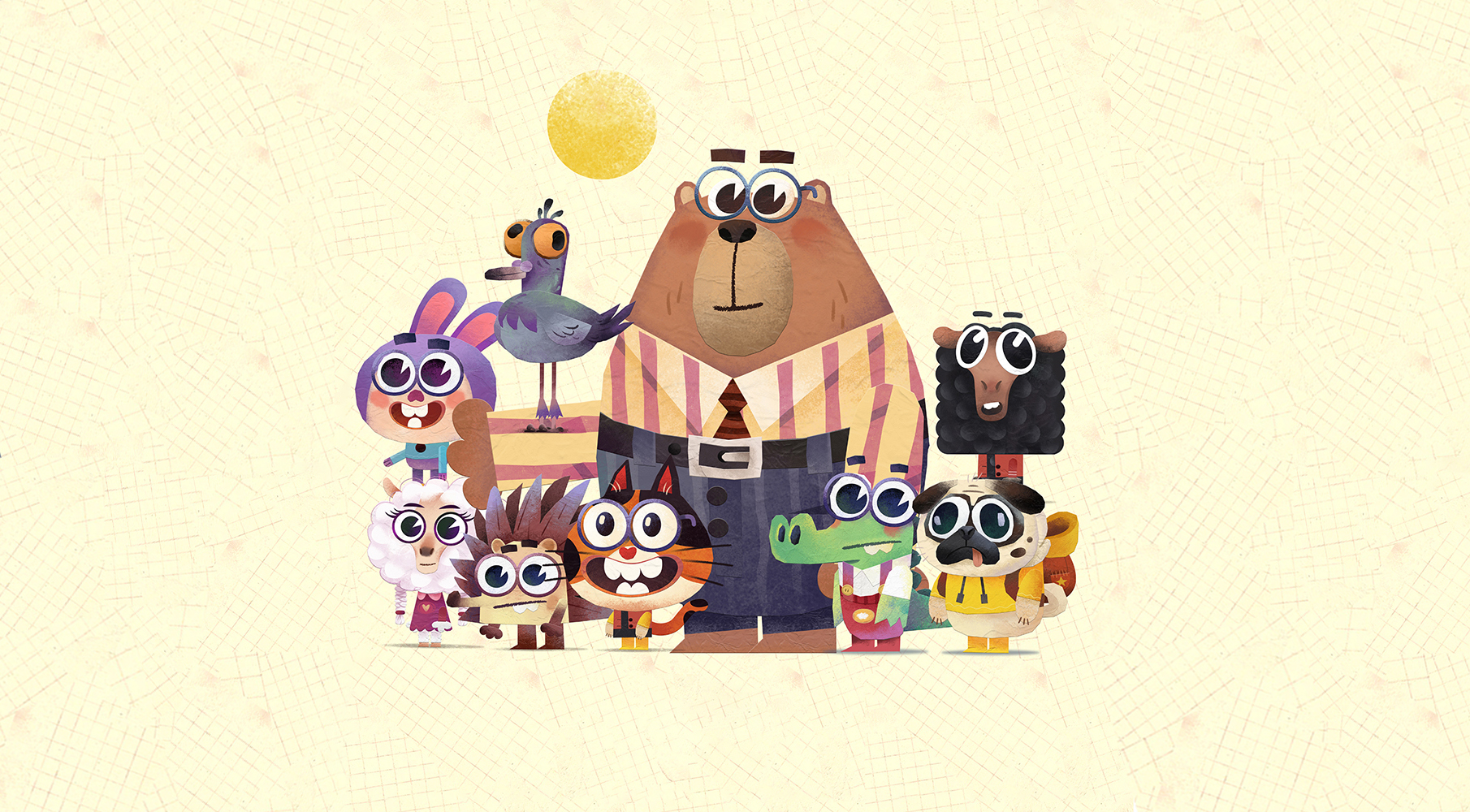Animation, with its vibrant visuals and playful storytelling, has captivated audiences for over a century. But when music is woven into the fabric of animation, a truly magical experience unfolds. This synergy between sight and sound creates a powerful force that can evoke emotions, enhance narratives, and leave a lasting impression on viewers of all ages.
The Allure of Music in Animation
Music plays a multifaceted role in animation, serving several key purposes:
- Emotional Resonance: Music has the unique ability to tap into our deepest emotions. Uplifting melodies can spark joy, while somber scores can evoke sadness. In animation, music seamlessly blends with on-screen action, amplifying the emotional impact of a scene. Imagine the thrill of a chase sequence underscored by a driving percussive beat, or the heart-wrenching melody accompanying a tearful goodbye.
- Narrative Enhancement: Music can act as a silent narrator, guiding the audience through the story without a single spoken word. Changes in tempo and instrumentation can indicate shifts in mood or the passage of time. For instance, a playful, light-hearted score might signify a comedic scene, while a gradual crescendo could build suspense leading to a climactic moment.
- Character Development: Music can be used to establish a character’s personality and motivations. A hero might have a heroic theme that inspires courage, while a villain might be accompanied by a sinister melody. Repeated musical motifs can create associations with specific characters, allowing viewers to recognize them instantly.
- World-Building: Music can transport viewers to different worlds, cultures, and time periods. Traditional instruments and musical styles can evoke a sense of place, immersing the audience in the setting of the animation. Think of the sweeping orchestral scores that transport us to fantastical realms, or the ethnic melodies that introduce viewers to diverse cultures.
- Memorable Moments: Certain musical pieces become synonymous with iconic moments in animation. Who can forget the soaring melody of “Hakuna Matata” from “The Lion King” or the chilling score from “Jaws”? These unforgettable musical moments become ingrained in our memories, forever linked to the animated experiences that shaped them.
Musical Animation and Its Impact on Different Age Groups
The power of musical animation extends to viewers of all ages, though its effects can vary depending on the audience’s developmental stage:
- Children: For young children, musical animation offers a particularly engaging experience. Catchy tunes combined with vibrant visuals hold attention spans and make learning fun. Animated shows featuring music can introduce children to basic musical concepts like rhythm, pitch, and different instruments. Furthermore, educational messages embedded in songs can be easily absorbed by young minds. Think of classics like “Sesame Street” and “Dora the Explorer,” where catchy tunes deliver valuable lessons about counting, colors, and problem-solving.
- Teenagers: Teenagers can be particularly drawn to the emotional power of music in animation. Themes of identity, friendship, and rebellion resonate strongly with this age group. Musical moments in animation can provide a safe space for teenagers to explore their emotions and connect with characters facing similar challenges. Coming-of-age stories like “Spirited Away” or “Turning Red” utilize music to beautifully capture the complexities of adolescence.
- Adults: Adults too can be captivated by the artistry of musical animation. Complex narratives, sophisticated musical compositions, and nostalgic references can create a deeply fulfilling experience for this audience. Musical animation can transport adults back to their childhood, offering a sense of comfort and familiarity. Think of timeless classics like “The Lion King” or “Beauty and the Beast,” which continue to resonate with adults decades after their release due to their enduring themes and powerful music.
Beyond Entertainment: The Educational Value of Musical Animation
Musical animation offers a unique platform for fostering educational growth in young viewers. Animated musicals can:
- Promote Music Literacy: Exposure to a variety of musical styles can nurture an appreciation for music and develop basic musical literacy. Children may learn to identify different instruments and recognize musical forms through repeated exposure in animation. Engaging shows like “Little Einsteins” or “Moana” can introduce young viewers to a wide range of musical genres, sparking curiosity and a love for music.
- Enhance Learning: Musical animation can make learning engaging and memorable. Complex concepts can be presented in a fun and accessible way through catchy songs and vibrant visuals. Imagine learning about historical figures or scientific concepts through the power of song and animation. Shows like “Schoolhouse Rock” or “Carmen Sandiego” are prime examples of how animation and music can effectively deliver educational content.
- Develop Social and Emotional Skills: Musical animation can promote social-emotional learning by exploring themes like empathy, teamwork, and overcoming challenges. Through the emotional journeys of animated characters, viewers can learn valuable life lessons. Stories like “The Mitchells vs. the Machines” or “Sing” utilize music to highlight the importance of family, friendship, and believing in oneself.

For younger audiences, shows like Axtaar Animation Studios’ “Woodland Songs” provide a perfect example of this. Here, a diverse cast of animal characters navigate social situations through engaging songs. Whether it’s a shy hedgehog struggling with social interaction or a pair of mischievous sheep twins learning about sharing, the music in “Woodland Songs” not only entertains but also teaches valuable social skills in a relatable and memorable way.
The Future of Musical Animation: A Symphony of Innovation
The future of musical animation is brimming with exciting possibilities. With advancements in technology, animation studios can create even richer and more immersive musical experiences. For example, the integration of virtual reality could allow viewers to feel like they are stepping into the world of a musical animation, surrounded by sights and sounds.
Additionally, the rise of streaming platforms has opened doors for diverse and original content. Independent studios can now reach wider audiences with their unique musical animation projects, fostering a global exchange of ideas and styles.
As animation and music continue to evolve hand-in-hand, one thing remains certain: the power of musical animation to entertain, educate, and connect with audiences of all ages will continue to grow stronger. From the catchy tunes that make us tap our feet to the moving scores that stir our emotions, musical animation offers a truly transformative experience that leaves a lasting mark on our hearts and minds.






